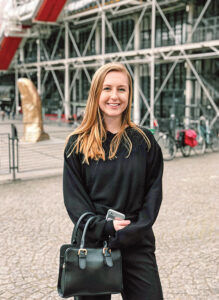One woman’s experience being diagnosed with and treated for COVID-19 abroad

I was case No. 576 at the National University Hospital in Singapore.
I had COVID-19, the novel coronavirus, “the rona,” or whatever else people are calling it.
I’m 21. I could go to the gym more, but I’m relatively healthy.
I grew up in Singapore, living there from ages 10 to 18 with my parents. After the rest of Colgate’s spring semester moved online, I flew back to be with them. I was in the country four days before going to get tested.
March 24, at 7 a.m., I went to National University Hospital for the test. Nurses and security immediately put me into an isolation room that looked like a small concrete box. A technician wheeled in a large machine so I could get a chest X-ray without leaving the isolation room, to reduce the risk of spreading the virus further. That was followed by the nose swab, which felt as if they were trying to reach my brain. The swab results take a minimum of a few hours, but if my chest X-ray was clear, I was not at risk for developing an infection in my lungs or pneumonia. My X-ray came back clear, so I was allowed to go home at 9:30 a.m. At 3:30 p.m., the hospital called to say I tested positive for COVID-19. Within an hour, an ambulance was at my house, with EMTs in full gear to ensure that no part of them was exposed to the virus, to me.
When we arrived at the hospital, the EMTs transported me from the ambulance to Ward 43 — one of the most traumatic experiences I’ve ever had. The full security team surrounded my wheelchair and screamed for everyone to clear out as we rushed through the hallways. I had already felt sick from the virus, but this truly made me feel like a disease. We eventually made it to my ward, and they wheeled me to my bed.
There were a total of six beds in my room. Three of us were in our early 20s, another patient was my mom’s age, and the other was my grandma’s age. It was interesting being in the same room with other patients who had the virus. All of us came from different backgrounds, including how we contracted the virus, but we had this common denominator of testing positive in such a strict environment.
March 24 continued to be a hectic day even after the arrival to my new living situation. I was on the phone with the Ministry Of Health (MOH) for hours as they combed through every step I had made since landing in Singapore.
In Singapore, those infected with the virus are sent to the hospital to ensure the virus cannot be spread and so patients are able to be closely monitored by teams of doctors and nurses. Vitals are checked three times a day, and patients are tested for the virus daily. All treatment is free to both residents and citizens of Singapore. Families of those infected are also closely monitored. Each is given a quarantine order notice that instructs all members to stay in the house for 14 days — so no grocery shopping, no walking pets, not a single foot is allowed to step out the door. The MOH videocalls a member of the family three times a day to ensure they are inside the home, and each member of the household must take their temperature three times a day. If any member feels symptoms, they must immediately go to the hospital for a test. If any resident violates this, their residency is revoked. Any citizen who violates this is jailed, fined, or both. There is strict monitoring, yet it is the only way to ensure the virus does not spread. Overall, Singapore was probably the safest place to be, and I felt fortunate to be there.
It was surreal to have those taking care of me totally covered up, while those infected were just in hospital gowns without protective equipment. The majority of health care workers’ faces were covered — with masks, goggles, hair nets — which takes away a large part of human communication. Each patient had their own stethoscope, blood pressure Velcro cuff, and blood drawing band. I am incredibly grateful to have access to treatment, but I definitely felt like a sick person in this situation. Everything I touched, regardless of what it was, went into biohazard waste.
Even with an unlimited amount of time on my hands, it was difficult to process everything. My mind constantly jumped from thought to thought. Graduation? People don’t have food. Senior spring canceled. Anxiety: You’re going to die from this.
I miss my friends.
After two weeks in the hospital and isolation hotel, I tested negative two days in a row, which allowed me to go home. I am incredibly grateful for the team of doctors I had and the level of care I received. This experience only further pushed my desire to go into medicine to help others.
I’ve also learned that I must be in the moment more and actively choose to do what makes me happy, because you never know when and what might come next that will disrupt “normal.”
— Sophia Coulter ’20 is a neuroscience major from Singapore. She plans to take the MCAT and pursue a career in medicine.
